Do I Need to Bring Anything to Jcc Regents Review
The next Earth Science Regents exam will exist held on Friday, January 28th, 2022, at 9:15AM. Will y'all be prepared? In this guide, we explain everything you lot need to know well-nigh the Globe Scientific discipline Regents exam, from what format the test volition follow to which topics it'll cover. We also include official sample questions of every question type you'll see on this exam and break down exactly what your answers to each of them should include. The Earth Scientific discipline exam consists of two main components: a lab performance test and a written test. The lab performance test is most 15% to twenty% of your total World Science Regents score. It'll exist administered at your school, on a date your school decides. It'll consist of iii lab stations and will exist worth a total of 16 points. The second section is the written portion of the exam (which we'll refer to every bit just "the test"). This guide focuses on the written portion of the exam. The written portion of the Earth Scientific discipline Regents Exam is three hours long and divided into four parts. During parts A and B-i, you'll reply a total of fifty multiple-option questions. For parts B-2 and C, you'll answer a total of 35 short answer questions. Yous're immune a calculator, and you'll too have access to a handy set of reference tables. Here'due south what the format of the examination looks similar. The multiple-option questions in parts A and B-1 all have iv reply choices, and many will be based on tables, images, graphs, etc. included in the exam. The short answer questions in parts B-2 and C will all be based on charts, maps, tables, images, etc. These truly are short answer questions, and most of your answers volition only be a few words, at most a few sentences. There are no essay questions on the Globe Science Regents exam. The main topics the Regents Earth Science Exam will exam you on are: Equally you can see, pretty much any topic related to Earth science is fair game for the test, including human impacts on the Earth, and you should be sure to written report each of these topics during your Globe Scientific discipline Regents review. In this section we include sample questions of both multiple-choice and curt-respond questions, forth with answer explanations. These questions all come from sometime Globe Science Regents exams. #1 For this question, you have a graph too every bit some accompanying information. Yous always want to read this data on the examination! The graph shows the water level at Kings Point, New York at different times over a iii-solar day catamenia. The question wants to know when the showtime low tide on December 26th occurred, so you lot'll need to be able to read and interpret graphs in order to get the question right. But Dec 26th isn't on the graph! That'due south OK because the tides appear to follow a pretty regular pattern, and so you can estimate the first low tide of the 26th by using the information that is in the graph. First, await at the graph and meet how long it takes to go from high tide (the highest points on the graph) to low tide (the lowest points on the graph). In that location are v complete loftier-to-depression tide changes shown. Since each line on the horizontal axis represents 2 hours (which y'all can tell from the numbers on the centrality), you lot tin count the lines to see how long it takes to get from high tide to low tide. For example, on December 23rd, there's a high tide at near 10PM, and the next depression tide is at about 4AM. That'south nearly a half-dozen-hour deviation between the two. If you calculate the altitude betwixt all the high and low tides, you'll see at that place are about six to eight hours between each. Let'southward say seven hours is the average. The graph cuts off at midnight on Dec 26th, and we can see that the h2o level has just begun to decrease afterwards reaching the loftier tide level. We can estimate high tide was at 11PM. Seven hours later on 11PM is 6AM, which is selection 1. That'southward the correct answer! #two This question wants to know about the limerick of the Earth'southward chaff, specifically, the percentage by mass of elements. In that location are four pie charts, and y'all have to choose which one is the most accurate. But what if y'all can't call back anything about the Globe's crust? Whenever you come to a question that requires data you don't know, your first step should exist to check your reference tables. And, how nigh that, the data you demand is correct on the first page, in the nautical chart labeled "Average Chemical Limerick of Earth's Crust, Hydrosphere, and Troposphere." It includes both the percentage by mass and the percentage by volume of elements, merely the question specifically asks for mass, so that's the column you desire to wait at. You tin can see 46.1% of mass is oxygen and 28.2% is silicone, which ways option 1 is the correct answer. Simply what if the information hadn't been in the reference tables? You can however use some common sense to eliminate evidently wrong answers. For example, choice 2 tin't be right because, if the Earth's crust was near all oxygen, it'd hardly be solid, correct? Selection 4 also doesn't seem right because that'd be an awful lot of silicon in the chaff. Yous'd probably remember if that was the case. That leaves respond choices 1 and two. It'southward pretty hard to choose between the two if you can't recollect annihilation well-nigh the crust, but mayhap you choose option 1 because you still call back a chaff of well-nigh half silicone doesn't sound correct. As yous can see, you lot can use common sense to narrow down your options, but having a solid knowledge of both earth science topics and what's included in the reference tables will definitely make the exam easier. Here's some useful communication: the reference tables you're given will help y'all on every prepare of short-answer questions on the Earth Science exam. For some questions they'll basically give you the answer, for others they won't aid as much, but y'all should exist prepared to refer to the reference tables for every fix of questions. This question set up is asking about plate tectonics. Flipping through your reference tables, y'all tin can encounter that the section on plate tectonics is on page v. Giving information technology a glance, you can run across information technology has a nice globe map of tectonic plates, and at the bottom there are diagrams of different tectonic plate boundaries. Onto the questions. As these are short-answer questions, there are no reply choices, and yous'll need to come with answers on your own. Some answers will be written in an accompanying answer booklet; it volition always say when you lot need to do this. The number in brackets following each question is the number of points it is worth. Question 53 wants to know the names of tectonic plates A and B. From the diagrams and the accompanying text, nosotros know that these tectonic plates come across at the Mariana Trench. Looking at the map in the reference tabular array, we run across that the Mariana Trench is marked on in that location. The 2 tectonic plates on either side of it are the Philippine Plate and the Pacific Plate. The Philippine Plate is on the western side (as is Plate A in the diagram), and the Pacific Plate is on the eastern side (as is Plate B). Therefore, Plate A is the Philippine Plate, and Plate B is the Pacific Plate. You need to get both of those correct in club to go the point. Question 54 asks you to identify the plate tectonic boundary shown in the cantankerous-section (the diagram on the left). In the diagram, it looks like Plate B is beingness forced under Plate A. Again, look at your reference table. Based on the fundamental at the bottom of the page, it is a convergent plate purlieus occurring at the Mariana Trench. There's your reply! Graders will actually accept any of the following answers: convergent boundary, convergence, subduction, or plate standoff. Question 55 asks you to place one other geologic surface characteristic in the surface area shown in the cross department. This one the reference guide won't help you lot with, but it's pretty easy to respond. But by looking at the cross-department, you lot tin run across mountains and a smoking volcano. Both are adequate answers. Other possible answers include: faults, seamounts, islands, and island arcs. Here are three last tips to help you during your World Science Regents review. We've said it earlier, merely it's worth repeating: the reference tables you tin look at during the exam will be massively helpful. They include a lot of information, and you'll be looking at them at to the lowest degree every few questions. However, search through all 16 pages of the reference tables can cause y'all to lose a lot of time, and if you don't have plenty time to finish the test, it'll be hard to score high plenty to pass. Therefore, you desire to have a good idea of what data the reference tables include and how they're organized earlier test day. Throughout the yr, and especially every bit the test approaches, wait through the reference tables and become familiar with them. You don't demand to memorize the information they include (that'd really be a waste product of your time), but you lot should know, for instance, that the information on the solar arrangement is almost the back of the tables and includes data on stars and data about the planets. Practice tests are one of the all-time resources to use during your Globe Science examination review. They give y'all an first-class idea of how well you'd score examination day, and they can help you lot figure out where your weaknesses are with content and fourth dimension direction, so you can drill these weaknesses down as much every bit you can. Official practice tests are the best to take, and fortunately, the NYSED has many available to y'all for gratis! You can access several dozen quondam exams, including answer keys. When y'all accept the practice tests, we recommend taking each 1 in i sitting, and using the aforementioned timing as y'all will be for exam solar day. There's no guessing penalty on Earth Science Regents, and then you lot should put down an answer for every question on the exam, even if you lot have no clue what the correct answer is. For multiple-choice questions, try to identify plain wrong answers to narrow downwards your answer choices if you're unsure. Your odds of answering a question correctly are much higher if you but have ii choices to cull betwixt, rather than 4. Yous might also want to come upwardly with a guessing number (ane-4), which you lot volition choose whenever you don't know which answer pick is correct. For example, if your guessing number is three, you'd e'er choose answer choice three for any multiple-choice questions you didn't know how to answer. Studying for other Regents exams? Check out our guides to Chemistry Regents, U.s.a. History Regents, and Algebra i Regents. Non sure which other scientific discipline classes you should be taking? Cheque out our complete guide to the science classes you lot should take in high school. Are you taking AP Environmental Scientific discipline and looking for study help? Check out our ultimate APES review guide, and get access to practice questions with our compilation of the best APES tests.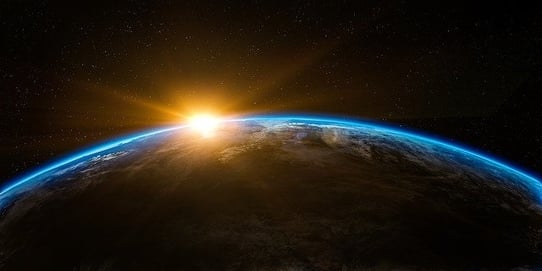
What's the Format of the Earth Science Regents Exam?
# of Questions Question Blazon Points per Question Raw Points Role A 35 Multiple choice 1 35 Part B-1 fifteen Multiple choice 1
29-30 Part B-two fifteen Short answer Varies Part C 20 Short answer Varies 20-21 Total 85 questions -- -- 85 points What Topics Does Globe Science Regents Comprehend?
Globe Science Regents Sample Questions + Reply Explanations
Multiple-Pick Sample Questions


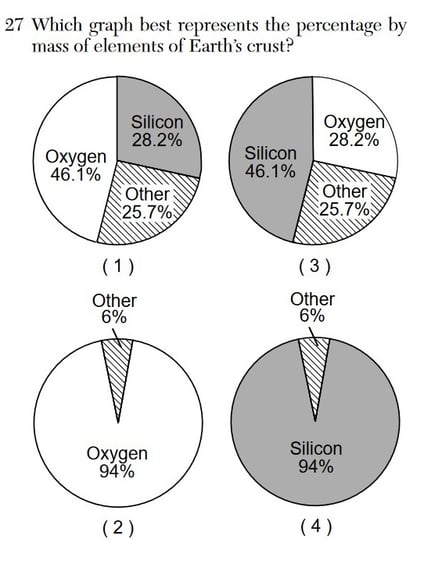
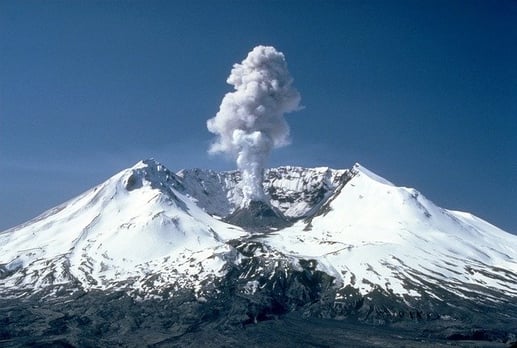
Short-Answer Sample Questions
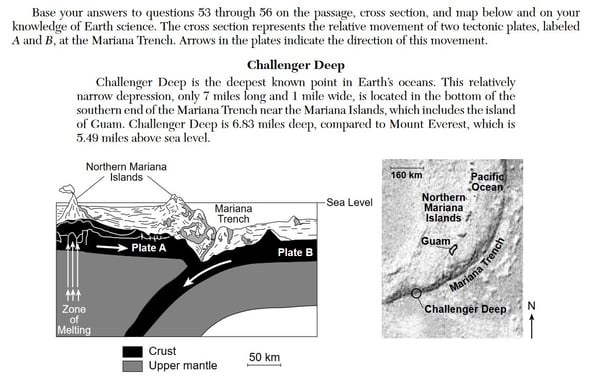

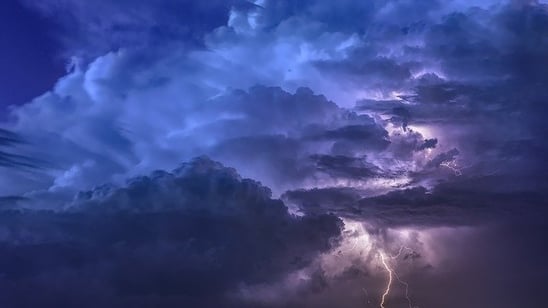
Tips for Your Earth Scientific discipline Regents Review
#1: Be Familiar With the Reference Tables
#2: Take Official Do Tests
#three: Answer Every Question
What's Next?

About the Author
Christine graduated from Michigan State University with degrees in Environmental Biology and Geography and received her Master's from Duke University. In high schoolhouse she scored in the 99th percentile on the Sabbatum and was named a National Merit Finalist. She has taught English and biology in several countries.
Source: https://blog.prepscholar.com/earth-science-regents-review
Enregistrer un commentaire for "Do I Need to Bring Anything to Jcc Regents Review"